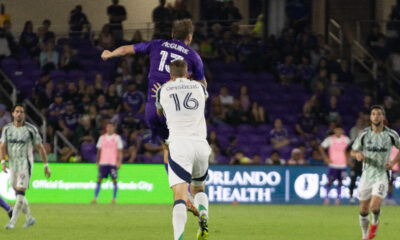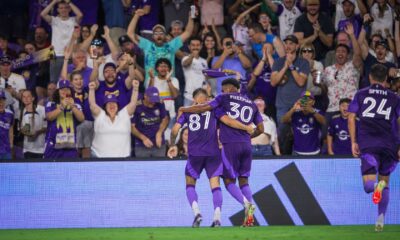Orlando City
Orlando City vs. Inter Miami: Five Takeaways
Here’s what we learned from Orlando City’s scoreless draw at home against Inter Miami.
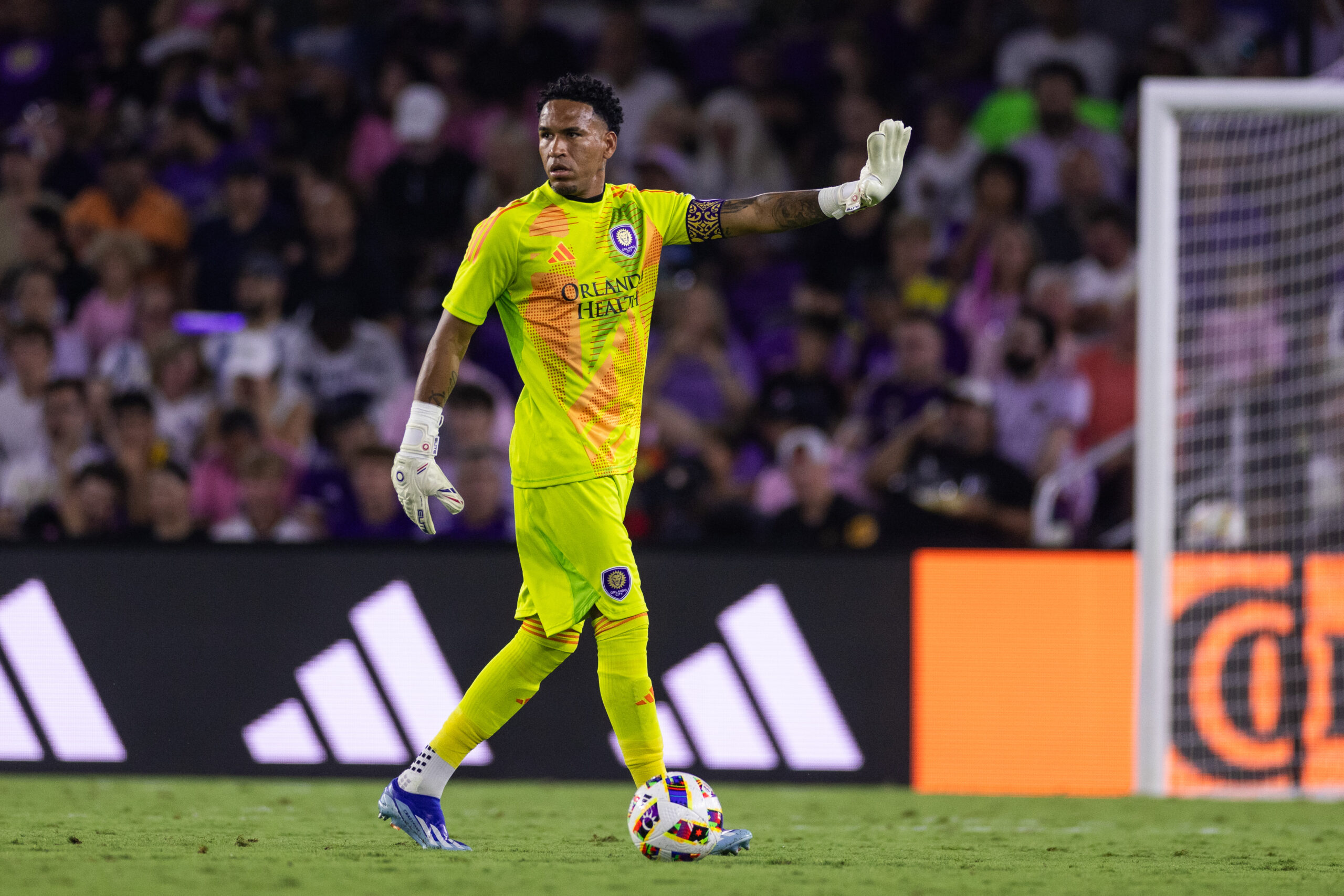
Orlando City welcomed Tropic Thunder rival Inter Miami to Inter&Co Stadium Wednesday night, and while it would have been nice to get revenge for the 5-0 beatdown in Ft. Lauderdale in March, we’ll have to settle for the scoreless draw. With or without Lionel Messi, Miami has been formidable in 2024, sitting atop the Eastern Conference standings. The Herons entered on a five-game streak of scoring at least three goals, so holding them scoreless is a good result, and the defensive performance is something to build on.
Here’s what I saw in Wednesday’s match.
Pareja’s Plug-and-Play 3-5-2
Oscar Pareja went back to the 3-5-2 formation that was so successful at Philadelphia. With Robin Jansson out with an ankle injury, Papi inserted Rodrigo Schlegel as the left center back next to Wilder Cartagena and David Brekalo. Ivan Angulo and Facundo Torres reprised their roles as wingbacks (more on that below), outside a midfield of Nico Lodeiro, Cesar Araujo, and Martin Ojeda. Luis Muriel and Duncan McGuire were the forwards at the top of the formation. Lodeiro’s role was that of a deep-lying playmaker, while Araujo had a defense-first role and Ojeda was higher in the attack. While it didn’t create as much against Miami as it did against the Union, the formation was largely effective and will likely be used again in the future. The team adapted well, turning in one of its best defensive performances of the season. While there were no goals scored, there were chances.
Herons Pick on Angulo
Much of Miami’s attack focused on the left side of the Herons’ formation — Orlando’s defensive right — where Angulo was playing wingback. Miami’s players on that side were winger Robert Taylor and fullback Franco Negri, who both have good pace. While Angulo can blaze past most opponents when making recovery runs, the Miami duo had enough speed to get in behind on the left flank and stay ahead of Angulo multiple times. The most dangerous chances on the night came from that side, while the players on the right — Matias Rojas, Julian Gressel, and Marcelo Weigandt — didn’t make much noise against Torres. Neither Angulo nor Torres are natural defenders, so it was interesting to see Miami focus more on the left instead of using both sides equally.
Cartagena Adds Center Back Option for Orlando City
While Cartagena has excelled as a defensive midfielder since arriving in Orlando, and his game at Phiadelphia was a mixed bag, the Peruvian has seemingly presented himself as another option for the Lions’ back line. Cartagena was arguably the team’s best center back against Miami, often being isolated against Luis Suarez. Cartagena held his own all night, and made several big plays. The team has opted to keep just three “regular” center backs, augmenting them by putting Abdi Salim or Thomas Williams on the bench when there’s an injury or suspension. However, it’s clear from watching OCB matches that neither Salim nor Williams are ready for MLS just yet, although there is plenty of upside for both. The emergence of Cartagena as an option is vital, and by protecting him in a three-man back line (and having success with it), Pareja has found some unexpected formation flexibility. We’d all like to see Robin Jansson healthy and in the lineup quickly, but it’s always good to have depth options — even unconventional ones.
Muriel Rounding into Form
Although there were no goal contributions from striker Muriel, the Colombian striker showed that his performance against Philadelphia was not a one-off. Muriel was outstanding both in the attack and in winning the ball back for his team. He should have had an assist on a Martin Ojeda goal in the 32nd minute, splitting the defense with his pass through a narrow opening. Unfortunately, Ojeda left his shot too close to Drake Callender, who still had to make a world-class save to keep it out. He dribbled defenders at will, made three key passes, and his second-half steal resulted in a yellow card on Taylor. He did the same thing to Sergio Busquets, only to see a soft foul given the other way. Muriel passed at a 74% success rate, put the ball in good areas, and forced a second big save from Callender with one of his three shots. While you’d like to see him finish his chance in the 77th minute on the counterattack, he lost the handle while setting himself up for a final move and shot, which is understandable with all the running he did Saturday and Wednesday. If this form continues, the goals and assists will as well.
Three Big Defensive Plays Led to Lions’ Clean Sheet
There were three key moments from Orlando City’s defense that preserved the clean sheet Wednesday night. The first happened two minutes after kickoff, when Luis Suarez managed to get outside and behind Brekalo. One of the most dangerous strikers in all of MLS was alone on goal with only Pedro Gallese to beat. Despite being at an angle, Suarez normally finishes such chances, but Gallese did well to get down and get a tentacle to the shot, keeping it out of his net. The defense arrived in time to clear the rebound and the Lions had dodged a bullet. The second big chance came in the seventh minute. It looked like an offside play when fullback Negri got in behind down the left flank. He cut the ball back for the trailing run of Taylor, who fired on target with his first shot. Brekalo was there to block the effort, keeping the game scoreless. The third of Miami’s golden opportunities came late. In the 74th minute, Jordi Alba — who had subbed on for Negri — got to the end line and sent a cross just in front of goal that got past Gallese at the near post. With striker Leonardo Campana breaking toward the back post, it appeared the shutout was over. However, midfielder-turned-center-back Cartagena arrived just in time to block the cross and Orlando survived.
That’s what I took away from a hard-fought, scoreless battle at Inter&Co Stadium. What stuck out to you? Let us know in the comments.
Orlando City
Orlando City Striker Duncan McGuire Undergoes Shoulder Surgery
It’s the other shoulder this time, but Big Dunc is on the shelf for awhile again after undergoing surgery.
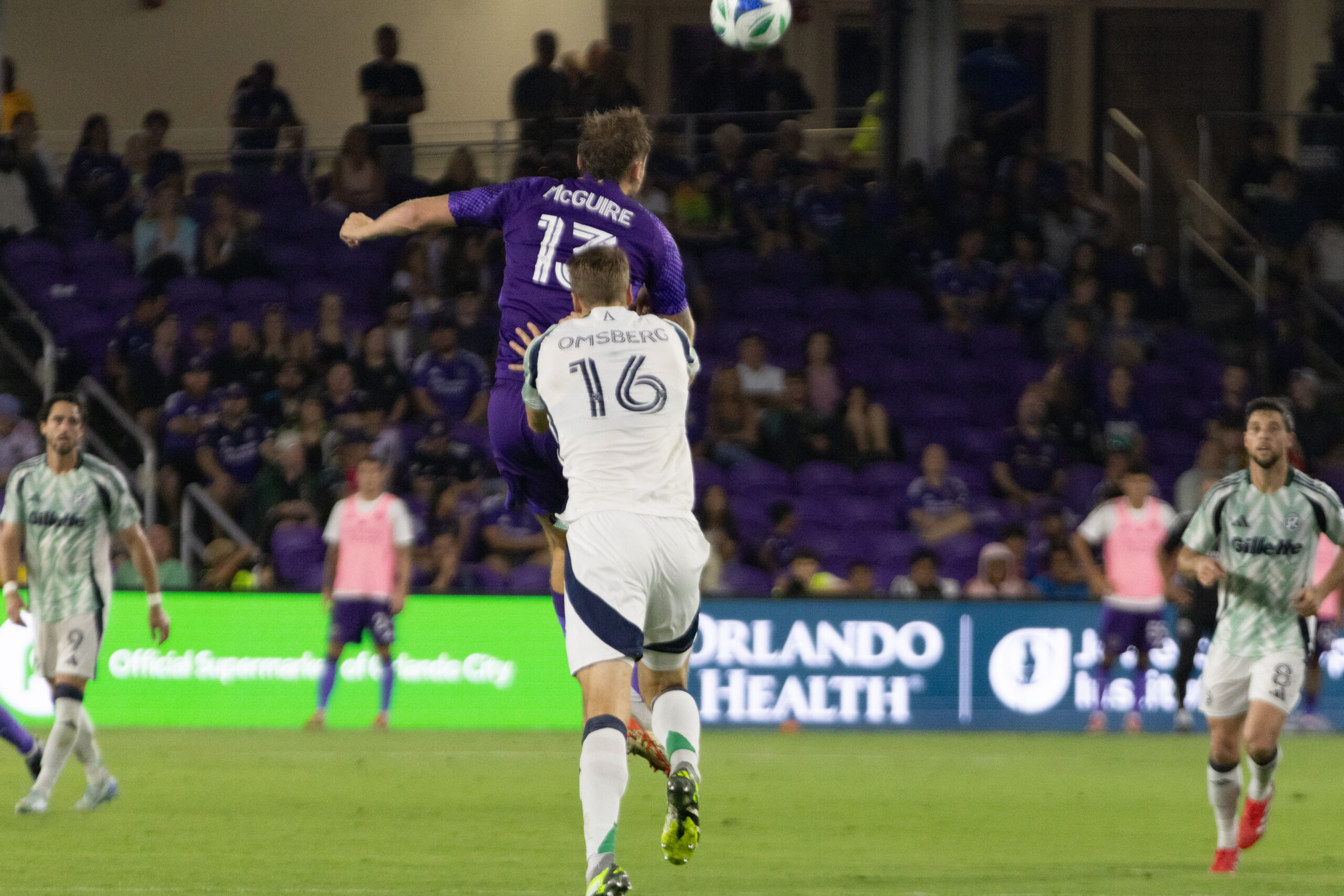
Orlando City announced today that Duncan McGuire has undergone arthroscopic surgery to repair the labrum in his left shoulder. The surgery was performed by Orlando City Chief Medical Officer Dr. Craig Mintzer of the Orlando Health Jewett Orthopedic Institute performed the surgery. Mintzer previously repaired the labrum and rotator cuff in McGuire’s right shoulder back in December for an injury he sustained in Orlando City’s playoff match against Charlotte FC Nov. 9 when he was pulled down by Djibril Diani.
The club’s press release said the 24-year-old striker’s return to play is expected “later this year.” The recovery given for his right shoulder surgery in late 2024 was listed as four to five months, but McGuire was able to come back and play much earlier than expected, appearing for the first time in 2025 in Orlando’s March 15 against the New York Red Bulls — at least a month before the earliest initial projection — however, this time there was no mention of damage to the rotator cuff.
Regardless, the Lions will be without the big target striker for a considerable amount of time.
McGuire had appeared in 12 matches during the regular season in 2025, starting three and scoring one goal and adding an assist. His goal came recently, serving as the game winner in Orlando’s 1-0 home victory over the Portland Timbers on May 24. He was recently listed as questionable on the club’s availability report ahead of the team’s most recent match against the Chicago Fire.
Orlando City drafted McGuire in the first round (No. 6 overall) in the 2023 MLS SuperDraft. After a breakout rookie campaign, in which the Omaha, NE native scored 14 goals, he was courted by several teams in Europe, signing with Blackburn Rovers, only to see the transfer rejected by the English Football League due to an administrative error by the EFL Championship club. After returning to Orlando, McGuire signed a new deal on Aug. 22 to remain a Lion. The new contract runs through 2027 with a club option for 2028. McGuire scored 10 goals and added three assists in 2024. For his Orlando City career, McGuire has appeared in 88 games (46 starts) across all competitions, scoring a total of 28 goals to go along with seven assists.
What It Means for Orlando City
McGuire appeared to be just finding his form, so this injury is unfortunate. The club didn’t put a timeline on McGuire’s recovery this time, but shaving a little off his 2024 recovery estimate, it’s likely that he’ll be out until at least some time in September.
Oscar Pareja has been favoring a 4-4-2 with Luis Muriel and Martin Ojeda up top in recent weeks, with Ramiro Enrique — who is also finding his form — typically spelling one of them when needed. Not having McGuire will affect Pareja’s late-game substitution pattern when Orlando is trailing, as he likes to put Enrique and McGuire both on the field when chasing the game. It also takes the team’s best target striker option out of the lineup when dealing with back lines with lots of height.
McGuire brings size and strength and an ability to occupy center backs that others on the roster can’t replicate. There are times when Enrique’s game is better suited to the opponent, but without McGuire there will be no ability to pivot. With Jack Lynn’s off-season retirement, that leaves the striker pickings mighty slim on the Orlando City bench. That might change Ricardo Moreira’s approach to the MLS Secondary Transfer Window.
Losing a scorer of McGuire’s caliber is always difficult, but this season it could be the difference between finishing high in the table and simply getting into the postseason in a strong Eastern Conference field.
Opinion
Orlando City Must Learn from May’s Mistakes
The Lions can learn some valuable lessons from the three losses they suffered in May.
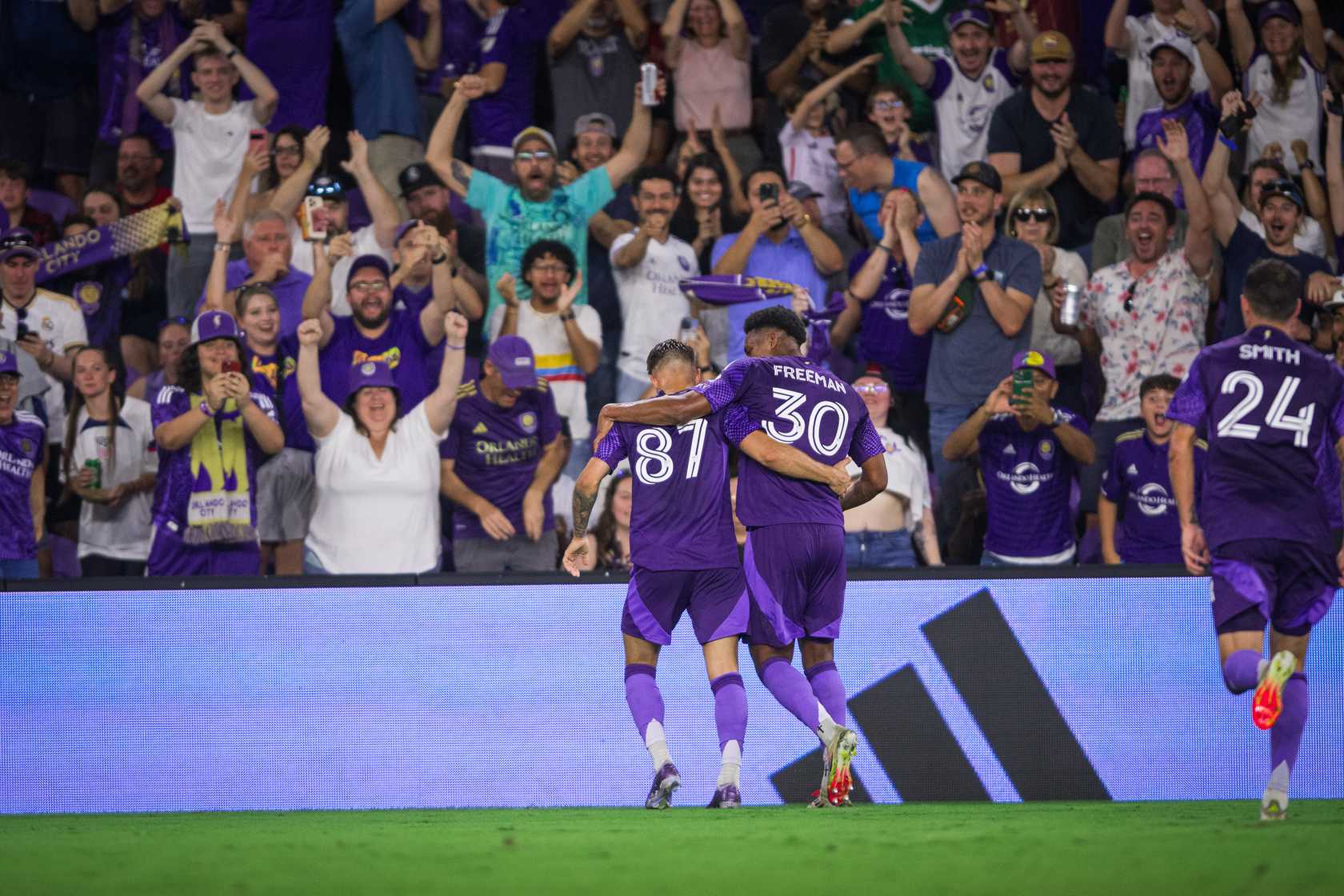
Orlando City hadn’t quite achieved juggernaut status as the Major League Soccer season turned from April to May, but a 12-match unbeaten run in the league is nothing to sniff at, despite there being a healthy number of draws interspersed with the victories. Things turned sour as May drew to a close though, as the Lions lost three of their final four matches of the month and entered a two-week break with a whimper rather than a roar.
Losing is never fun, but in this case those three defeats don’t need to be entirely negative experiences, and there are plenty of lessons to be learned from those three bitter losses that will hold Orlando in good stead if it can implement the proper solutions.
More Squad Rotation
One of the biggest factors in Orlando’s rough finish to May was a lack of squad rotation. Oscar Pareja has always been a coach that likes to find his first-choice XI and stick to it almost religiously. He doesn’t normally tweak his lineups or tactics according to whatever opponent is on the slate, and very much values consistency. In periods of fixture congestion, that tendency can be to Orlando’s detriment, and that was very much the case against both Nashville SC and the Chicago Fire.
After beating Inter Miami 3-0 in an emotional rivalry match on May 18, Pareja made just one change for a U.S. Open Cup match against Nashville SC three days later. Ramiro Enrique slotted in for Luis Muriel up top, but every single other starter from the Miami game also got the nod midweek. With Nashville deploying a heavily rotated lineup mostly filled with backups, the gamble was a simple one: hope that OCSC’s A-team can open up a big first-half lead against Nashville’s B-squad before bringing mass changes in the second half to get guys some rest. Hindsight is, of course, 20/20, but the strategy backfired badly as the Lions lost 3-2. Orlando started well with Marco Pasalic’s 17th-minute strike, but the team faded badly afterwards and gave up a couple of very uncharacteristic goals to lose the game. Lapses in concentration and tired defending cost OCSC the game, and that isn’t something we can normally say about this team.
Then, after losing to Atlanta United 3-2 on May 28 due in no small part to Cesar Araujo’s red card, Pareja made two changes for a match against the Chicago Fire on May 31, with Muriel coming in for Enrique, and the other change being a forced one, as Eduard Atuesta replaced the suspended Araujo. Those starters looked noticeably gassed during the resulting 3-1 loss, and the fatigue manifested itself by players missing chances that would normally be converted or in sloppy, mistake-ridden defending.
May was a packed month with a whopping nine matches in 31 days, and most months won’t be that busy. August is set to be the busiest remaining period of the year with six games in 31 days, although that number could rise higher if the Lions make a run in Leagues Cup. The bottom line is that guys are going to need more rest as the season goes on. If the coaching staff doesn’t trust some of the guys currently available as backups, then they need to dip into the transfer market in one way or another and get some players that they do trust, because if the starting XI gets run ragged during busy periods it’s going to cost Orlando, plain and simple.
Cool Heads Usually Prevail
Orlando City has received three red cards on the season, which is tied for the second-most in the league. Unsurprisingly, the Lions are winless in games in which they’ve had a man sent off, with draws against the New York Red Bulls and CF Montreal and a loss to Atlanta United. The results against the Red Bulls and Atlanta were particularly difficult to swallow, as before going down to 10 men, Orlando had looked on track to get three points in each game.
Araujo’s red card against Atlanta was especially frustrating, as he allowed Mateusz Klich to get under his skin, grabbed him by the throat, and reduced his team to 10 men when OCSC was nursing a 2-1 lead on the road. It was completely unnecessary and was also the sort of thing that Orlando had looked to put in the rearview mirror after keeping its collective composure and not picking up any bookings in the 3-0 road win against Miami, while the Herons picked up four and looked noticeably rattled in the process.
It should go without saying, but the Lions can’t afford to get key players sent off. Six extra points could make a big difference in the standings at the end of the year, and that number could rise even higher if OCSC can’t put its disciplinary issues to rest once and for all.
Focus for the Full 90
There were moments in each of Orlando’s three May losses that the team committed bad defensive lapses or mistakes. Whether it was not playing to the whistle on Nashville’s third goal, Atuesta’s bad turnover against Atlanta, or the Lions collectively allowing Chicago to stroll through midfield to score a third goal, there were plenty of examples of bad breakdowns that were largely absent during the team’s unbeaten run. Can some of that be attributed to tired minds and tired legs? Maybe so — it’s a lot harder to play crisp and focused when the minutes have piled up. Regardless, its something that can’t continue to happen going forward. It’s possible that having more rotation in the squad will help that a lot, but it’s also on the players on the field to stay as mentally sharp as they can when they’re out on the pitch.
Clearly, a recurring theme here is that fresh legs and balanced squad rotation are top of my list of things I want to see change. I’m all for riding the hot hands, but tired legs make for tired minds, and tired minds make mistakes and are easier to rile up. Whether reinforcements come from the bench or an outside source, using more bodies will go a long way towards solving some of the issues that we saw in May’s three losses. All we can do now is wait and see what happens once the team returns from its break. Vamos Orlando!
Lion Links
Lion Links: 6/6/25
Alex Freeman called up for Concacaf Gold Cup, Orlando Pride get ready for the Houston Dash, Orlando City B plays tonight, and more.
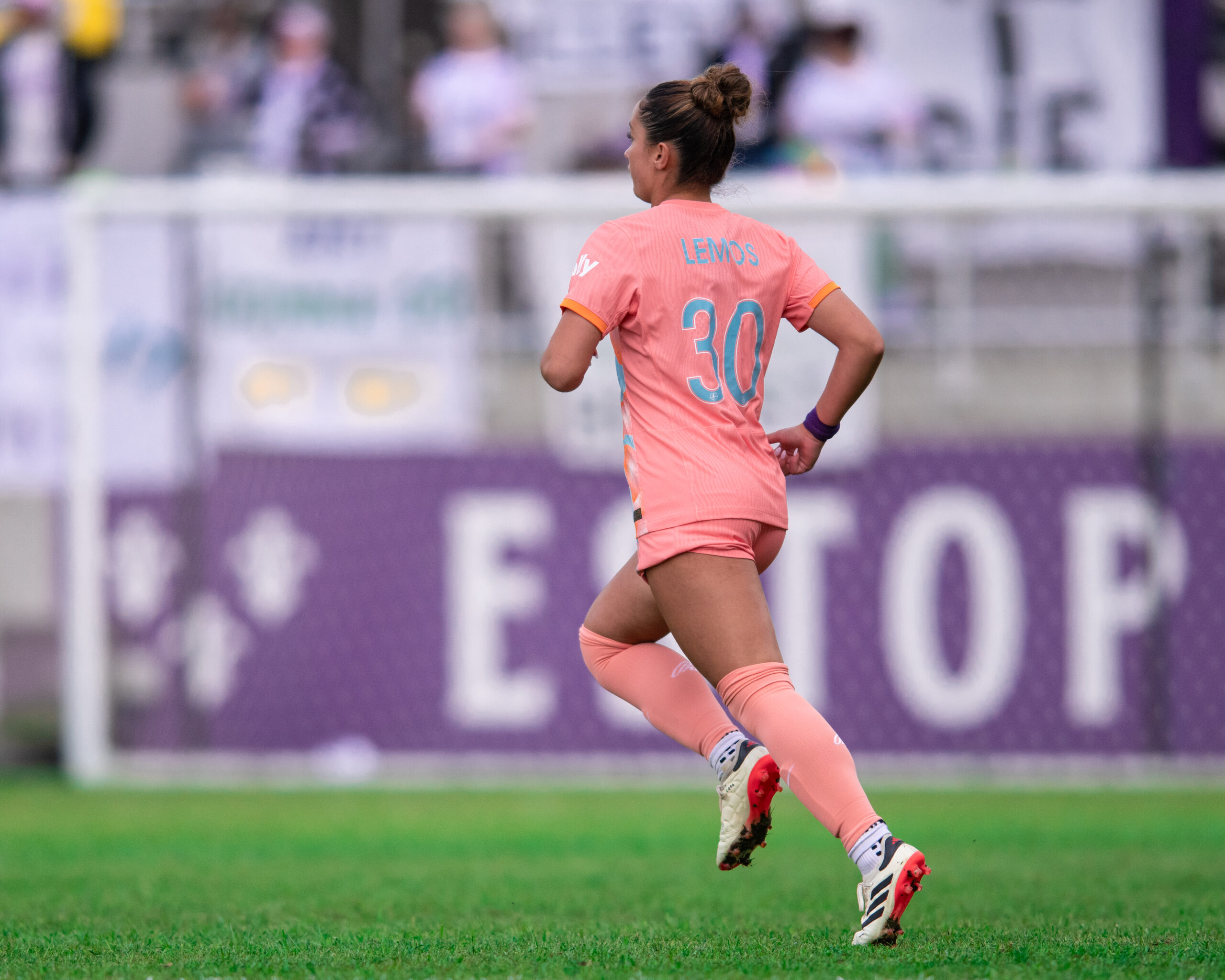
Happy Friday! I’ll be spending this weekend celebrating my birthday by beating my friends at mini golf with no mercy but still hope to catch some soccer over the next few days. I’ve also been on a bit of a movie kick and plan on catching Wes Anderson’s new flick at some point soon. But for now, let’s dive into today’s links!
Alex Freeman Called Up For Gold Cup
Orlando City defender Alex Freeman was officially called up by the United States Men’s National Team for the Concacaf Gold Cup this summer. He’s the only Lion who will be at the tournament and is one of seven uncapped USMNT players on the roster. The 20-year-old could receive more playing time than expected, as right back Sergino Dest is not on the roster so that he can recover over the summer. Left back John Tolkin was added to replace Dest, so Freeman has a real shot at making a claim for the position this month. The U.S. will take on Turkey Saturday in the first of two friendlies before its first Gold Cup match against Trinidad & Tobago on June 15.
Orlando Pride Prepares to Host the Houston Dash
With the international break for women’s soccer over, the Orlando Pride return to action Saturday with a home game against the Houston Dash. It should be a great opportunity for the Pride to ease back into the swing of things against a Dash team that’s only scored 10 goals this season. Pride midfielder Ally Lemos spoke on the benefit of being able to rest heading into this match while maintaining a winning mindset from a 3-1 victory on May 23.
Anna Moorhouse Called Up For 2025 Euros
Orlando Pride goalkeeper Anna Moorhouse was named to England’s final roster for the 2025 UEFA European Women’s Championship. She’s one of three goalkeepers on the squad following Mary Earp’s surprise retirement from international soccer, and she will likely compete with fellow uncapped player Khiara Keating for the backup position behind Hannah Hampton. Moorhouse has started in every game for the Pride this season and was an NWSL Goalkeeper of the Year finalist for her record-breaking season last year. England’s Euro run will begin July 5 against France before other group matches against the Netherlands and Wales.
Orlando City B Takes On Huntsville City FC
The Young Lions are riding high after a 2-1 win over Chattanooga FC and will take that momentum into tonight’s road match against Huntsville City FC. Midfielder Noah Levis scored his first career goal in that home win, with Justin Hylton providing the assist in his OCB debut. Orlando’s offense has been hot and cold this season but has a variety of attacking talent that can create chances in different ways. The Young Lions have only won once on the road, but a win tonight would lift them to third in the Eastern Conference.
Free Kicks
- FIFA Club World Cup action is coming to the City Beautiful this month and Orlando City legend Kaká spoke on how it’s nice for Orlando to host games.
- San Diego Wave Head Coach Jonas Eidevall was named NWSL Coach of the Month. The Wave were undefeated in May, winning three of their four matches to climb to second in the league standings.
- The NWSL will allow intraleague loans for all teams, with the players needing to consent to the move in order for it to happen. Denver and Boston’s expansion teams will have access to potentially over $1 million in Allocation Money starting on July 1 to build their rosters before the 2026 season.
- Atletico Madrid is reportedly close to signing American midfielder Johnny Cardoso from Real Betis.
- South Korea, Uzbekistan, and Jordan all qualified for the 2026 World Cup, while China was eliminated from contention. Australia beat Japan 1-0 and will qualify so long as it doesn’t lose heavily to Saudi Arabia on June 10.
- Spain beat France 5-4 in a wild game to reach the UEFA Nations League final against Portugal on Sunday. Lamine Yamal continues to take the world by storm, but a late rally by France nearly completed a comeback.
That’s all I have for you this time around. I hope you all have a fantastic Friday and rest of your weekend!
-
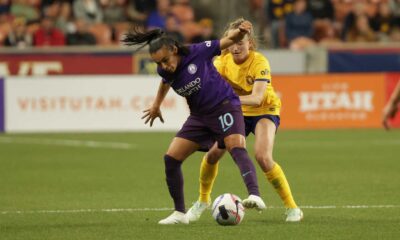
 Orlando Pride2 weeks ago
Orlando Pride2 weeks agoOrlando Pride vs. Utah Royals: Preview, How to Watch, TV Info, Live Stream, Lineups, Match Thread, and More
-
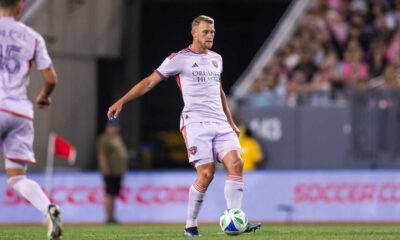
 Orlando City2 weeks ago
Orlando City2 weeks agoOrlando City vs. Portland Timbers: Preview, How to Watch, TV Info, Live Stream, Lineups, Match Thread, and More
-
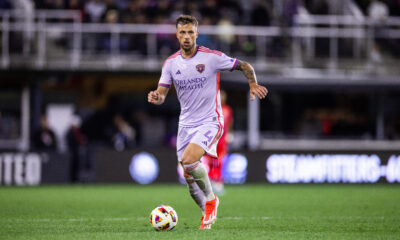
 Lion Links1 week ago
Lion Links1 week agoLion Links: 5/30/25
-
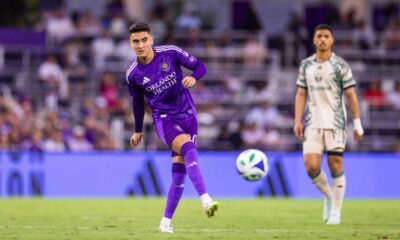
 Orlando City2 weeks ago
Orlando City2 weeks agoOrlando City vs. Portland Timbers: Final Score 1-0 as Lions Tie Club-Record 12-Game Unbeaten Streak
-
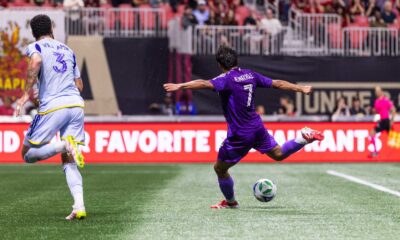
 Orlando City1 week ago
Orlando City1 week agoOrlando City vs. Atlanta United: Final Score 3-2 as Late Araujo Red Card Turns Orlando Lead into a Loss
-
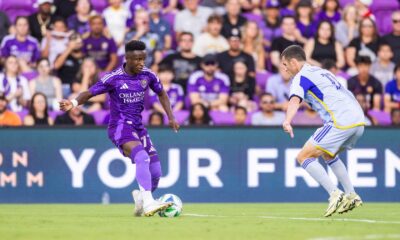
 Orlando City1 week ago
Orlando City1 week agoOrlando City vs. Atlanta United: Preview, How to Watch, TV Info, Live Stream, Lineups, Match Thread, and More
-
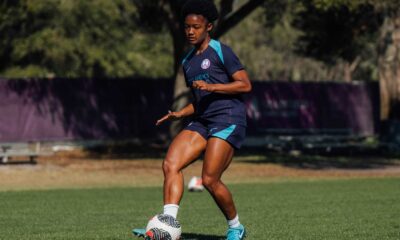
 Orlando Pride1 week ago
Orlando Pride1 week agoOrlando Pride Sign Forward Simone Jackson Through 2028
-
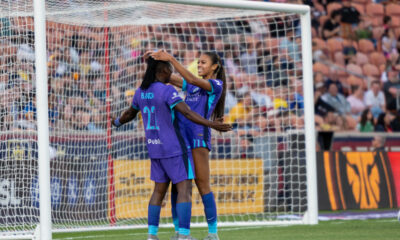
 Orlando Pride2 weeks ago
Orlando Pride2 weeks agoOrlando Pride vs. Utah Royals: Final Score 3-1 as Pride Win Behind Barbra Banda Hat Trick


